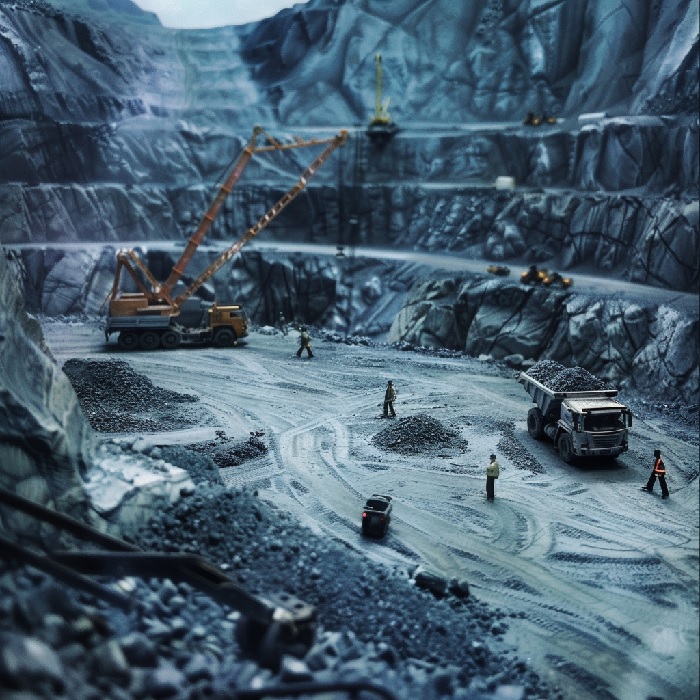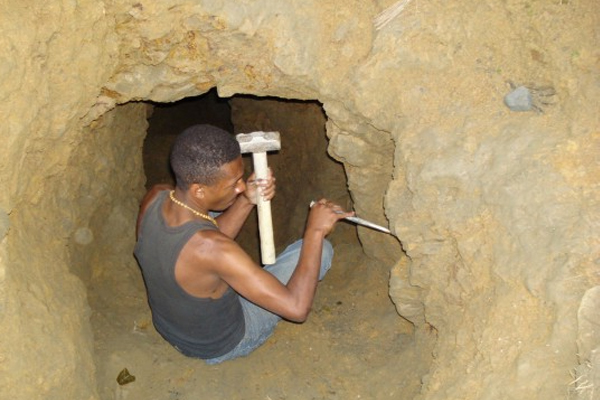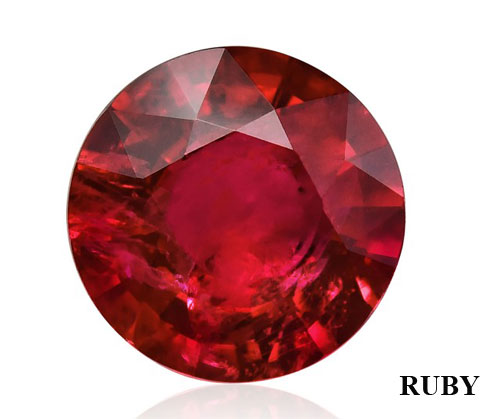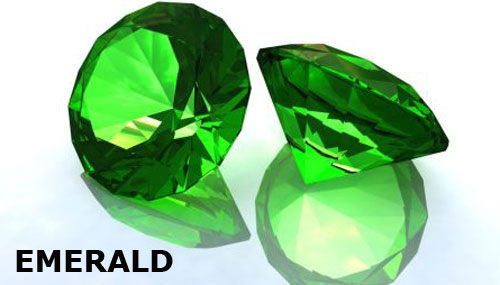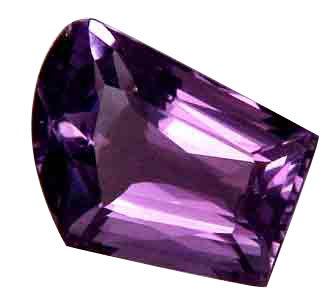Magnesium Mining
MAGNESIUM :
Magnesium gets its name from magnesite, a mineral consisting of magnesium carbonate. This mineral, in turn, is believed to have been named after the magnesite deposits discovered in Magnesia, an ancient region in Thessaly, Greece. It's said that British chemist Humphry Davy produced a mixture of magnesium in 1808 by electrolyzing damp magnesium sulfate, using mercury as a cathode.
The first successful industrial manufacturing endeavor began in Germany in 1886 by Aluminum und Magnesiumfabrik Hemelingen, relying on the electrolysis of molten carnallite. Hemelingen later became a constituent of the industrial conglomerate IG Farbenindustrie, which, during the 1920s and 30s, developed a process for producing large quantities of molten and essentially water-free magnesium chloride (now known as the IG Farben process), as well as the technology for electrolyzing this product into magnesium metal and chlorine.
MINING AND CONCENTRATING :
Both dolomite and magnesite are extracted and processed using traditional methods. Carnallite is extracted as ore or separated from other salt compounds brought to the surface through solution mining. Naturally occurring magnesium, including brines, is collected in large ponds through solar evaporation.
EXTRACTION AND REFINING :
A potent chemical reagent, magnesium forms stable compounds and reacts with oxygen and chlorine in both liquid and gaseous states. Extracting the metal from raw materials thus becomes an energy-intensive process necessitating finely tuned technologies. Commercial production follows two entirely different methods: electrolysis of magnesium chloride or thermal reduction of magnesium oxide. In regions with low energy costs, electrolysis proves to be the more economical method and indeed, it constitutes approximately 75 percent of global magnesium production.
1. ELECTROLYSIS :
The process involves two steps: first, an industrial process with magnesium chloride, and then the decomposition into magnesium metal and chlorine gas in electrolytic cells. Typically, industrial processes use feedstocks containing various molten salts, such as anhydrous magnesium chloride, partly dehydrated magnesium chloride, or anhydrous carnallite. To purify carnallite ores, they are crystallized from heated solutions containing magnesium and potassium, yielding dehydrated artificial carnallite.
The Dow process is employed to obtain partly dehydrated magnesium chloride. It involves mixing seawater with lightly burnt dolomite in a flocculator, causing insoluble magnesium hydroxide precipitates to settle. These precipitates are pumped out as a slurry, filtered, and converted to magnesium chloride by treating them with hydrochloric acid (HCl) before being dried. The subsequent smelting phase marks the final dehydration.
Anhydrous magnesium chloride is produced through two consecutive methods: dehydration of magnesium chloride brines or chlorination of magnesium oxide. The IG Farben process is utilized to obtain fully dehydrated magnesium chloride. After obtaining precipitated Mg(OH)2 from the Dow process, it is filtered and calcined to magnesium oxide, mixed with charcoal, and formed into globules upon addition of magnesium chloride solution. These globules are dried, charged, and heated in a furnace using carbon electrodes at temperatures of 1000-1200°C. Chlorine gas is introduced into the furnace through portholes, reacting with magnesium oxide to produce molten magnesium chloride (MgCl2), which is then tapped off and sent to the electrolytic cells.
The dehydration of magnesium brines is achieved by removing impurities through precipitation and filtering in the Norsk Hydro process. The purified brine obtained contains about 8.5 percent magnesium, which is concentrated by evaporation to 14 percent. It is then converted into fine particles and further dried to water-free particles before being sent to the electrolytic cells.
The electrolytic cells are vessels equipped with multiple steel cathodes and graphite anodes, mounted vertically and submerged in a molten salt electrolyte composed of alkaline chlorides to which magnesium chloride, produced in any of the aforementioned ways, is added in concentrations of 6-18 percent. The magnesium chloride decomposes into magnesium metal, which floats to the top for collection, while chlorine and other gases are generated at the graphite anodes.
MgCl2 ------------ > Mg (liquid) + Cl2 (gas)
2. THERMAL REDUCTION :
In thermal production, dolomite undergoes calcination to produce magnesium oxide (MgO) and lime (CaO). These compounds are then reduced by silicon (Si), resulting in the formation of magnesium gas and a slag of dicalcium silicate. The primary chemical equation for this reaction is endothermic, meaning it requires the application of heat to initiate and sustain it. As magnesium achieves a vapor pressure of 100 kilopascals (1 atmosphere) at 1,800°C (3,270°F), substantial heat is necessary for the process. To reduce reaction temperatures, industrial processes often operate under vacuum conditions. Three principal methods exist, distinguished by their heat supply mechanisms.
2CaO + 2MgO + Si -------------- > 2Mg + Ca2SiO4
In the Pidgeon process, ground and calcined dolomite is combined with finely ground ferrosilicon, then briquetted and loaded into cylindrical nickel-chromium-steel retorts. These retorts are horizontally installed in an oil- or gas-fired furnace, with their lids and attached condenser systems extending outside the furnace. Following a reaction cycle at 1,200°C (2,200°F) and under reduced pressure (13 pascals), magnesium crystals (referred to as crowns) are collected from the condensers, while solid slag is removed, and the retort is recharged.The Bolzano process involves stacking dolomite-ferrosilicon briquettes on a specialized charge support system. Internal electric heating is applied to the charge, and a complete reaction occurs over 20 to 24 hours at 1,200°C and below 400 pascals pressure.
The dicalcium silicate slag generated in the aforementioned processes typically solidifies due to its high melting point (about 2,000°C or 3,600°F). However, by introducing alumina (aluminum oxide, Al2O3) to the charge, the melting point can be lowered to 1,550–1,600°C (2,825–2,900°F). This method, employed in the Magnetherm process, allows direct heating of the liquid slag through an electric current conducted by a water-cooled copper electrode. The reduction reaction occurs at 1,600°C and 400–670 pascals pressure. Vaporized magnesium is condensed in a separate system attached to the reactor, while molten slag and ferrosilicon are periodically tapped.
TOP MAGNESIUM PRODUCING COUNTRIES :
ANNUAL MAGNESIUM USAGE :
MAGNESIUM PRODUCTION IN THE WORLD :
Although magnesium-bearing ores are abundant worldwide, China stands out as the largest producer of magnesium. China's magnesium mining operations surpass those of other countries such as North Korea, Russia, Canada, Austria, and the USA. China's substantial magnesite reserves contribute significantly to its status as the leading global magnesium producer, overshadowing other nations. Additionally, magnesium-bearing brines are estimated to be a resource in the billions of tons, with magnesium recoverable from seawater along coastlines worldwide. However, highly concentrated magnesium reserves are primarily found in three countries: Russia, China, and Korea. The United States also plays a significant role in magnesium reserves, with the Dead Sea and the Great Salt Lake in Utah boasting abundant magnesium resources. The top five countries, ranked accordingly, are as follows:
Related Mining





